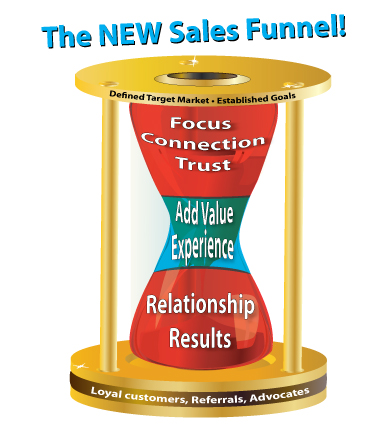These are at best challenging economic times! When I think about the pace of change, demanding customers and increasing competition, I think sometimes it is easier to find Waldo than it is to find new business. Add to that the expanding regulations and threat of changes (up or down) with interest rates, it can be even more difficult to get our prospects to make a decision and to actually get them to close the deal.
There is so much that can impact our ability to bring in new business which is out of our control, but that still does not change the fact that we have goals to meet, business that needs to get done, and bottom lines that need to be built. Despite all of the economic challenges and uncertainty we are facing these days, I still do believe this is one of the best times to grow your business and bring on new clients. You just need to understand this new economy, and understand what it takes in today’s highly competitive market to open more doors and close more sales!
First you need to understand this economy is not up or down– it is different, radically changed. This is an economy where the consumer, your prospect, is in control. They believe they can buy anything they want whenever they want, wherever they want and from whomever they want. That makes what we sell, what we offer, no matter how amazing or different we think it is, to the average prospect it has become a commodity. When our products and services become a commodity, it is not what we sell, but how we sell it that makes the difference. It is the how we do things that gives us our competitive advantage.
So how do we sell in this economy? How do we open more doors and close more sales? Here are three strategies you need in this economy to turn more of your prospects into your long-term customers.
3 Strategies To Turn A Prospect Into A Customer
#1: New Sales Funnel
First you need to understand that today’s sale cycle is dramatically different, the sales funnel has changed from an actual funnel to work more like an hour glass. In years past our sales strategy was to call aggressively on prospects until we got them to buy one product or service, and then we declared them a customer and moved on to the next prospect.
In today’s economy moving too aggressively will push prospects away, and not staying actively involved once they become a customer will send them to your competition. So the sales funnel you need to work today is different and the actions you take unique. It starts with relationship building and pulling the prospect into wanting to get to know you. Remember the only thing differentiating you from your competition is your ability to get the prospect to know, like and trust you, and to do that you need to give the relationship time to build and grow.
Once the prospect decides to buy a product or service with you, you need to understand this is your moment to shine. The  prospect has moves in the neck of our new sales funnel and they are “trying you out”, giving you a shot to win their long-term business. The first experience your prospect has with you will determine if this is a one-time transaction or a long-term relationship. If you do it right, if you deliver an amazing experience, your customer/prospect will slip into the base of the funnel. And the base of the funnel is where trust is built and the selling process begins.
prospect has moves in the neck of our new sales funnel and they are “trying you out”, giving you a shot to win their long-term business. The first experience your prospect has with you will determine if this is a one-time transaction or a long-term relationship. If you do it right, if you deliver an amazing experience, your customer/prospect will slip into the base of the funnel. And the base of the funnel is where trust is built and the selling process begins.
In today’s economy, once customers trust you, they are ready to buy from you and they are ready for you to aggressively sell. With the relationship built, customers expect you to proactively suggest products and services.
#2: Invest Before You Ask
In today’s economy is not what the prospect can do for you, but what you can do for your prospect. When it comes to sales we hear so much “me” language, and we learn so many skills about how the customers can help us achieve our goals. To sell today you need to slow the sales process down, invest the time to really listen to the customer and hear what is important to them and what they need. Doing that accomplishes two things, first it tells the customer you care, you are interested and that this relationship will always be more about them than it is about you. Second, it gives you the exact information you need to actually sell the customer. If you listen to the customer, invest in them, they will tell you exactly what they want and need. All you have to do is take action.
#3: Follow-up & Follow Thru
The chances that you are going to call on a prospect at the exact time they need your product or service are slim to none. So if you want to turn more prospects into customers you need to follow-up and follow-thru. In other words you need to stay in the game. The goal with sales is to again build the relationship, but then continue to add value to it in a way that ensures you are the person your prospects think of when they are ready to buy!
So yes, these are challenging economic times, but it does not mean it is not a great time to grow your business. If you understand this new economy, understand how your prospects and customers have changed, and follow these three strategies then you will open more doors and close more sales. Remember, it is not what you sell, but how you sell it that is going to turn your prospects into customers.






